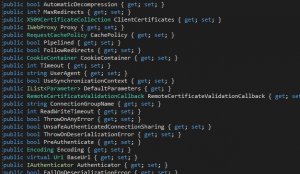Improved safety – but check the handbook first
Car-seat cushions and seat-belts are optimised for the comfort and protection of adults, and yet until recently have been the only means of supporting and attaching child restraints too.
Inevitably, compatibility problems can arise where child seats are attached to the car using adult seatbelts and no ‘universal’ child restraint can be installed satisfactorily in all seating positions in all cars.
Misfitting of universal seats is also a common problem due to the complexity of the task.
‘Plug-in’ child seats
ISOFIX, a standard system for attaching child restraints into cars was first proposed in the early 1990s though it took more than a decade for the technical standards to be agreed.
The idea is simple. Car makers provide small, cheap and inconspicuous attachment points in standard locations in new cars whilst child restraints have latches on the back to lock onto the mounting points in the car with a simple push/click.
Key benefits of ISOFIX
The original vision of ISOFIX was that it would:
- be a standard, universal means of attaching child restraints
- eliminate misfitting problems common with the use of adult belts
- improve dynamic performance of child restraints as the seat is directly and rigidly attached to the car structure.
These objectives have been achieved though it has to be said that the system is perhaps not as easy to understand and simple to use as hoped – cars don’t all have the same anchorages and the seats aren’t all ‘universal’ so you do still have to do your homework before buying and, critically, must check the vehicle handbook.
Forward rotation
The two latches at the back of the child restraint prevent it from moving forwards but it is the car seat cushion itself that supports the weight of the child restraint – if the cushion’s too soft then the child restraint can rotate forwards in a crash increasing the forces acting on the child and the risk of injury.
To prevent this forward rotation a ‘universal’ child restraint requires a third rigid point of attachment. This may be either a rigid support leg between the front of the child restraint and the floor of the car or a ‘top tether‘ strap connecting the top of the restraint to a fixing point provided by the car maker on the parcel shelf, boot floor or seat back.
Two-stage process
Due to delays in agreeing standards a compromise between car manufacturers and a European standards workgroup resulted in ISOFIX anchorages being introduced into cars in a two stage process.
The earliest cars fitted with ISOFIX anchorages were equipped with a two-point system only. Because the car seat cushion plays a crucial role in the performance of the child restraint these must only be used with ISOFIX child restraints specifically approved for use in that car – semi-universal or vehicle specific ISOFIX seats. (the make/model of car will be specifically named on the box/application list for the child restraint)
More recently, new models of car have had two or more seating positions provided with ‘three-point’ ISOFIX anchorages – two-point plus top-tether – making them suitable for ‘universal category’ ISOFIX child seats.
ISOFIX classes
Besides the different categories of ISOFIX seat, ‘universal’ and ‘semi-universal’/vehicle specific, there are several different size classes too as, for example, a full height forward facing restraint may not physically fit in the back seat of a small car.
The main size classes are:
- A – ISO/F3: full height forward facing toddler child restraint
- B – ISO/F2: reduced height forward facing toddler child restraint
- B1 – ISO/F2X: reduced height forward facing toddler child restraint
- C – ISO/R3: full size, rearward facing toddler child restraint
- D – ISO/R2: reduced size rearward facing toddler child restraint
- E – ISO/R1: rearward facing infant child restraint
Check the Vehicle Handbook
If you’re contemplating buying an ISOFIX child restraint it is essential to check the vehicle handbook first.
For every seating position and child mass group the handbook will give detailed information regarding the categories (Universal/semi-universal/model specific) and size classes of ISOFIX child restraint that may be used.
The handbook will also provide clear instructions for attaching a child restraint to the lower anchorage points and, if provided, to the top-tether mechanism too.



